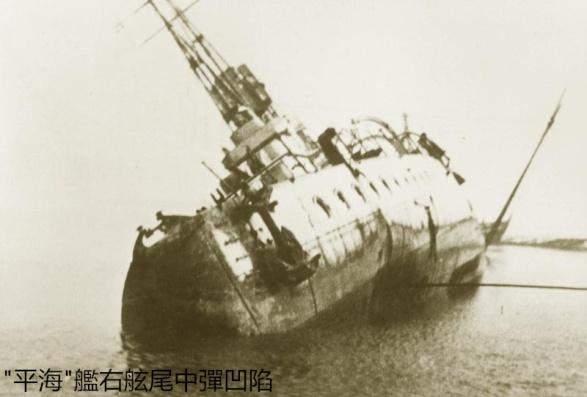Jiangyin naval battle
The synonym Jiangyin Defense War (1937 Jiangyin Anti-Japanese War) generally refers to the Jiangyin naval battle. Outdated. After the capital was established in Nanjing in 1928, the Nationalist government actively improved the defense of the fortress in order to build it as a barrier to protect Gyeonggi. On the eve of the outbreak of the Anti-Japanese War in 1937, the fortress area had six fortresses in Huangshan, Dongshan, Xishan, Eshan, and Xiaoshan, equipped with 8 latest German 88mm war defense guns, 4 German 150mm cannons, and various old-style howitzers. 20 doors (both diameters above 150 mm). The speedboat unit of the Lightning School of the Ministry of Military and Political Affairs is also stationed here.
The shipwreck closed the river
On July 7, 1937, the Sino-Japanese War broke out. In the months after the war broke out, the Japanese army was advancing steadily, and the war situation in North China was in jeopardy. The Nanjing National Government foresaw that the war would inevitably burn to the south soon, and almost on the same day that the Japanese army began to attack Shanghai, the "National Army War Guidance Plan" formulated under the guidance of the German advisory group was issued. This plan clearly instructed: "While the Songhu side is carrying out the war, the Wusong Pass shall be blocked, the enemy ships in the Wusong Pass shall be blocked, and the enemy ships in the Wusong Pass shall be completely controlled to pass through Jiangyin to the west, and a joint operation of the fortresses and the land forces shall be used. "
The specific tactics for preventing the Japanese army from entering the river were finally introduced at this time under the decision of the navy's senior level. The strategy was to sink the ship to seal the river. On July 28, 1937, Chiang Kai-shek decided at the Nanjing Supreme National Defense Conference to control the enemy's chances and block the Yangtze River route before the Japanese attacked the Yangtze River, and intercept the Japanese 11th Clan in Jiujiang, Wuhan, Yichang, and Chongqing in the upper and middle reaches of the Yangtze River. 13 The homecoming of ships and a large number of Japanese Chinese was used as a bargaining chip for negotiations with Japan; and to prevent the Japanese army from going up the river again. The navy representative Chen Jiliang proposed to implement the shipwreck and seal the river immediately and was approved. The meeting decided to implement Fengjiang on August 12, 1937.
Who expected the situation to change suddenly? Huang Jun, the secretary of the Executive Yuan, who served as the minutes of the meeting, has long been lured into the water by the Japanese spy Nanzao Yunzi, who has the pseudonym Liao Yaquan and lurks in Nanjing Tangshan Hot Spring as a waiter. That night, he was about to pass the top-secret information to the Japanese espionage personnel with whom he had been connected (there are divergent opinions on this matter, and there are still doubts).
On August 11 and 12, 1937, Japanese ships in the middle reaches of the Yangtze River hurriedly descended. Japanese Chinese flocked to the docks in Hankou, Jiujiang, Shashi and other places. The secrecy work of this operation was done quite well. The Japanese ships that successively passed the Jiangyin "locking fortress" did not unload their gun suits to prepare for battle, and the personnel swayed upstream of the bridge, which did not arouse the Chinese side's vigilance. At that time, the "Yixian", "Jiankang", "Zhongshan" and "Yongji" ships of the 1st Fleet of the Republic of China Navy and some ships of the 2nd Fleet were being assembled at the mouth of the lake under the command of Lieutenant Admiral Chen Jiliang, the commander of the 1st Fleet. The firepower of Jiangning and Jiangyin fortresses is also ready. However, due to the rush of the incident, there was no coordination. When the Japanese warship passed by, some of our fortress units failed to respond in time due to insufficient vigilance; and the naval fleet that noticed the abnormality had not received the interception order and had to stand still. . When the Navy of the Republic of China realized that the Japanese army had retreated, the best time for interception had passed.
By the time the Chinese side began to seal the river on the 13th, a total of 13 Japanese ships (including the flagship "Yaeyama") had already gone. My staff headquarters urgently sent teams from Nanjing and Jiangyin to search the river, until the two search teams at the Tuanshan border met, and it proved that the Japanese ships had all escaped. In the end, only the Japanese Shanglun "Dazhen Maru" was captured near Hankou, and the "Dazhen Maru" was captured near Jiangyin.
At the time of the Lugouqiao Incident, Chen Shaokuan, Minister of Navy of the Republic of China, was participating in the coronation of the King of England in the United Kingdom, and by the way, he purchased arms and ships from Britain, Germany and other countries. After the incident, he hurriedly returned to China to preside over the naval anti-war aircraft. The first job is to Fengjiang. The preliminary work of Fengjiang was carried out intensively, first of all, the destruction of navigation marks.
Causes of the war
On August 11, 1937, the Admiralty sent the "Ganlu" survey ship, "Jorri" and "Qingtian" survey boats, and "Suining" and "Wei "Ning" gunboats damaged the West Zhou, Hupukou, Tiehuangsha, Xigang Road, Langshan, Dayao Port, Tongzhou Sand, Qingtian Jiao, Liu Haisha to Changfusha, Haibei Port Sand, Longtan Port, Fujiangsha and other places. Light beacons, light posts, lighthouses, light boats and surveying benchmarks. The ships completed the destruction of the navigation mark within two days, causing the enemy ship to lose its navigation mark. At the same time, the assembly of the main forces of the Navy's 1st and 2nd Fleet from Hukou and Xiaguan to Jiangyin has been completed, and 49 warships have entered the Yangtze River on standby to "maintain Gyeonggi." On August 12, 1937, the main forces of the two fleets assembled on the Jiangyin River. The first large-scale mobilization of the navy after the Sino-Japanese War of Sino-Japanese War of 1894-1895.
The first batch of self-sinking warships are the oldest "Tongji" practice ships, "Datong", "Ziqiang" light cruisers, "Desheng", "Waisheng" water machine carrier, and "Wusheng" "Sheng" survey boat (disabled), "chen" and "Su" torpedo boats (all discontinued), most of these warships are old ships left over from the Qing Dynasty. In addition, the Navy also collected 20 ships from China Merchants and various shipping companies to sink at the same time to form the Jiangyin lock line. When the First Fleet arrived in Jiangyin, the 28 military and civilian ships waiting to sink were already anchored on the Junshan River.
At 8 o'clock in the morning on the 12th, the ships on the Jiangyin River were led by the light cruiser "Pinghai" for a flag-raising ceremony. At 8 o'clock, the "Pinghai" ship held a flag-raising ceremony, and the officers and soldiers of each ship "stand on the slope" on the ship's side to salute the military flag. Chen Shaokuan's commander flag rose slowly to the top of the mainmast amid the sound of military music.

After the ships arrived at their positions, Chen Shaokan, who was sitting in the "Pinghai", issued an order to sink the ship, and each ship opened the bottom door at the same time and sank slowly. The sunken operation had only come to an end in the evening, and Chen Shaokan stood on the "Pinghai" bridge, speechless. It was the whistle of the Japanese steamer, and the flag was lowered, making people want to cry without tears.
Because of the rapid currents, most of the first batch of ships were washed away from their ideal positions by the currents when they sank, resulting in an incomplete blockade. When the Admiralty found that the blockade was incomplete and there were many gaps, it requisitioned three civilian ships and sank into the blockade. Eight Japanese barges seized in Zhenjiang, Wuhu, Jiujiang, Hankou, Shashi and other places were also towed. Go to the cordon to scuttle. The Ministry of the Navy also asked the Executive Yuan to order the provincial governments of Jiangsu, Zhejiang, Anhui, and Hubei to urgently requisition 185 civilian boats and salt boats, which were loaded with stones and sank into the gaps of the blockade. These civilian ships used a total of 309,400 cubic feet of stones, or 65,020 pallets. If you add the four cruisers "Hairong", "Haiqi", "Haiqi", and "Haichen" that sank on September 25, 1937 (after the naval war), they would have sunk in total during Jiangyin's shipwreck and river closure operations. 43 old warships and commercial ships, with a total tonnage of more than 63,800 tons.
The process of the war
The prologue of the bloody battle
The Japanese army continued to invest in the Shanghai front, especially in the area of heavy weapons, which had an overwhelming advantage. The battle on the Songhu front was precarious ( In fact, the Japanese army occupied the whole city of Shanghai on November 12, 1937). Since then, the defense of Nanjing has kicked off. Following the advice of General Alexander von Falkenhausen, since the winter of 1935, the National Government Military Committee has secretly mobilized the forces of four divisions, and secretly constructed two defense fortifications between Shanghai and Nanjing as the outskirts of Nanjing. Defensive line (because the 1932 "Songhu Armistice Treaty" stipulates that no troops can be stationed around Shanghai, this has always been carried out in secret): The Wu-Fu Line starts from Fushan on the south bank of the Yangtze River in the north, and often goes to Suzhou, Wujiang, and Jiaxing to the south. Hangzhou Bay is the first line of defense against Nanjing. The second line is the Xicheng Line, starting from Jiangyin Fortress in the north and Wuxi by the Taihu Lake in the south. The Jiangyin Fortress, located on the Xicheng line and the backbone of the Yangtze River defense, has undoubtedly become the defense fulcrum of the army and navy of Shanghai and Nanjing defense fortifications, and the general hub of the Yangtze River defense operations.
On July 19, 1937, the Japanese air attacked Jiangyin County and dropped a bomb at the Jiangyin Southeast Township Society, which opened the prelude to the defense of Jiangyin.
After the war in Shanghai, the Japanese army also attached great importance to the strategic position of Jiangyin Fortress. The Japanese side believes that the Chinese naval fleet assembled in the Jiangyin Fortress not only hinders air operations in Nanjing, but the firepower of its long-range artillery threatens Japanese ships operating along the lower reaches of the Yangtze River. Therefore, whether it is due to air operations or the need to blockade China’s southeast coast, Both must annihilate the Chinese fleet.
But fearful of the strong firepower and mine-laying ability of Jiangyin Fortress (which was not implemented in practice), the commander of the Third Fleet, Lieutenant General Hasegawa Kiyoshi vetoed the proposal to attack Jiangyin directly, and instead dispatched the second unity. The air force (the 12th and 13th air force of the land-based 2nd air force) and the sea-based first air force "Kaga" aircraft carrier performed this mission. The specific combat arrangement is to first suppress the turrets with carrier-based aircraft, and use some of the carrier-based attack aircraft to contain the turrets, and then use the main force to attack the "Pinghai" and "Ninghai" ships with all their strength. Regrettably, up to this time, the Chinese Navy was still arranging preparations for the battle according to the mode of a surface fleet decisive battle, and lacked psychological preparation for the Japanese military's combat methods mainly by aviation. Minister Chen Shaokuan once clearly instructed: "The enemy wants to use a fleet to sail from the Yangtze River, and must destroy our blockade. To destroy our blockade, we must first annihilate our navy guarding the blockade. Based on the topography of the Yangtze River and the performance of the navy. It seems that in order to achieve the strategic purpose of "its", the navy of "its" should be used...."
On August 13, 1937, the Battle of Songhu started. In the conference room of the flagship "Pinghai", front-line battle reports are transmitted over the radio every hour. Almost all the officers gathered here, sometimes worried, and sometimes excited about the heroic achievements of the Army and Air Force. At the same time, they also had a foreboding that the battle that was about to break out on the Jiangyin River would never be inferior to the Songhu battlefield. At 10 o'clock, the Naval Command ordered the ships to enter the first level of combat readiness, the naval guns were removed from the gun jackets, and they were ready to shoot into the air at any time.
At 11:05, the "Ninghai" ship air defense observation post reported: "10 planes, flying from upstream to Jiangyin!" The "Ninghai" ship immediately sounded the alarm. This was Jiangyin's operation since the start of the war. The first air strike. The ships moved when they heard the police, and the sailors ran to the gun position, turned the muzzle, aimed at the aircraft, and fired after only a command! At this critical moment, the command to "lift the alarm immediately! Don't shoot!" was suddenly received, which puzzled the officers and soldiers who had been excited to the extreme.
It turned out that the navy had just received a report that a fleet of the Chinese Air Force took off from Nanjing and flew over Jiangyin to Shanghai to bomb enemy ships. The news came out, making the sailors laugh and laugh; finally a tragedy was avoided. In the following days, planes of the Chinese Air Force continued to fly over the blockade to the Songhu battlefield, and almost every time Ninghai issued air raid warnings. A few false alarms made people panic. Because the plane was extremely fast and flying high, the plane was already flying over the sky after the warning was issued, and only then could it be identified as a Chinese plane. The anti-aircraft post is also a big headache for this. At that time, the Chinese navy and air force were fighting separately, and there was no effective communication between each other (Note: At that time, there were not many countries in the world with experience in inter-service cooperative operations).
In order to avoid misunderstandings leading to tragedies, the Naval Command and the Air Navigation Commission discussed and proposed that Chinese aircraft will never pass over Jiangyin again in the future; because almost all naval firepower is concentrated in Jiangyin, in case It's not easy to explain to the Chinese people if something happens. After several consultations, the matter was successfully resolved: All the Chinese Air Force flying to the Songhu battlefield to participate in the battle would detour south or north, and no longer appear in the sky over Jiangyin.
Proactively attack
The Naval Lightning School in Jiangyin is known as the "Maritime Huangpu Military Academy". The school’s three torpedo boat squadrons imported 15 torpedo boats from Britain and Germany, and they were organized into "Yue Fei", "Shi Kefa", and "Wen Tianxiang" squadrons.
On the evening of August 14, under the leadership of An Qibang, the deputy captain of the Jiangyin Electric Mine School Torpedo Speedboat Team, two Shizi speedboats lurked in Shanghai from the inland river camouflaged fishing boats, and arrived at Longhua on the Huangpu River in the early morning of the 15th. . On the morning of the 16th, Ouyang Ge, the chief of education of the Naval Academy and commander of Jiangyin River Defense, personally led people to reconnaissance the enemy fleet in the Bund area and deployed a plan to attack the Izumo Ship. Taking into account the need to conceal the attack, it was decided that the "Shi 102" speedboat alone would act as the main attacker, and the "Shi 171" speedboat would serve as the backstop. The "Shi 102" boat launched an attack 400 meters away from the enemy ship. With a loud bang, a torpedo hit a barge next to the Izumo ship with heavy smoke and sank immediately. In an instant, the second torpedo hit the Izumo ship's tail again, this time it hit the Izumo ship's tail, but because the torpedo was not powerful, the Izumo ship could not kill it even though the tail was damaged.
The Japanese did not expect the Chinese navy torpedo boats to launch a surprise attack on the Izumo ship. After a period of turmoil, they immediately fired a counterattack. Ship No. 102 was shot and grounded near the Jiujiang Road Wharf. Anqibang and other officers and soldiers immediately dumped the machine gun and ammunition on the ship into the Huangpu River, and then concealed after swimming, and were able to escape safely.
In the newspaper the next day, the Chinese Navy’s attack on the Izumo ship made headlines. American reporters also described this wonderful attack with the title "Battle on the Yangtze River". On the 20th, He Yingqin, the then Minister of Military and Political Affairs, sent a message to commend him, "Although he did not succeed, he has reduced the arrogance of the enemy ship. I still hope to make persistent efforts and make arrangements to achieve all success."
The Chinese Air Force also bombed the Japanese flagship Izumo armored cruiser for three consecutive days from August 14 to August 16. s attack".
Official engagement
The Jiangyin naval battle kicked off on August 16, 1937. Seven Japanese planes flew towards Jiangyin next to the river to scout the deployment of our army. The sailors on the ship launched an attack. The Japanese plane did not dare to fly low and fled after dropping two bombs at high altitude.
At 7:30 a.m. on August 19, 1937, 12 carrier-based planes from the "Kaga" aircraft carrier flew over the Jiangyin Fortress. Chinese warships and fortresses fired in the air, woven into a dense fire net, and 12 planes fled in a hurry. From the 16th to the 20th, the enemy planes either conducted reconnaissance or threw stones to ask for directions, and no substantial battle took place. The observation deck reported that an enemy water reconnaissance aircraft was found flying over the port side of the fleet. The navy immediately ordered the anti-aircraft guns to prepare for firing, but the reconnaissance plane circled for a while and then turned around and flew north. At 11 o'clock, the observation deck again reported that 12 enemy aircraft (the "Kaga" carrier aircraft) appeared behind the Huangshan Fortress, and the Huangshan Fortress also hoisted an alarm signal. In a moment, the enemy plane appeared in the sky. The Chinese warships and fortresses fired against the air in unison, woven into a dense fire net, bombarded for a total of 15 minutes, and consumed nearly 10,000 rounds of ammunition. The enemy planes were frightened by the power of Chinese artillery fire and never dared to fly low; in addition to their unfamiliar technology, they were in a hurry and the formation was disrupted. Japanese planes that lost their formation scurryed around Jiangyin. Only two of the 12 planes dropped two bombs, both of which fell.
Latest: Invoicing Management System








